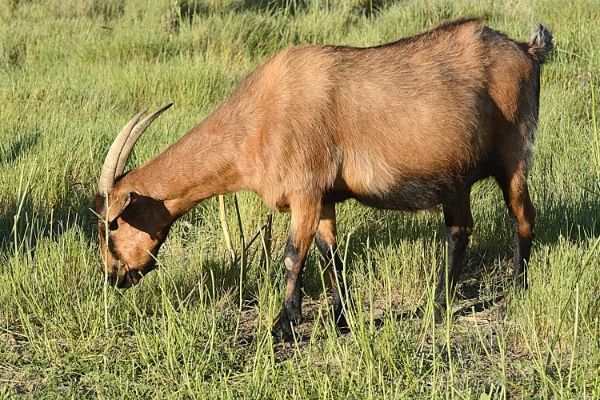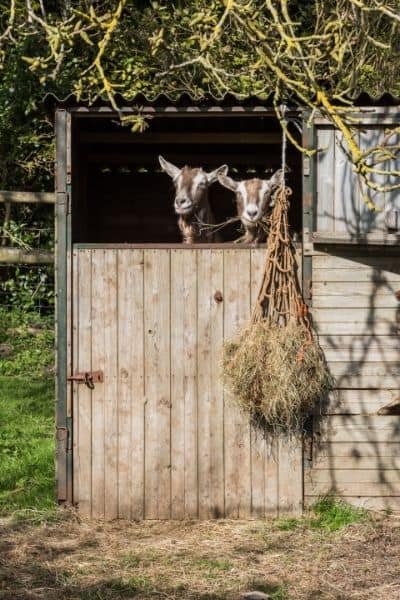Goats produce delicious and profitable milk for those who own them. For many amateur dairy farmers and goat owners looking to profit from their goat’s delicious milk, there’s one important question to ask- do goats need to be pregnant to produce milk?
Goats (like many other types of dairy-producing animals) do indeed need to be pregnant to produce milk. The only case in which a doe (female goat) produces milk without being pregnant is when they experience a “false pregnancy,” which is rare. You can collect milk from your goat during the 10 months in which she lactates.
If you’re interested in learning more about whether goats need to be pregnant to produce milk, you’ve come to the right place. Without further ado, let’s dive into all the important details about milk production in goats.
Goats Do Need to be Pregnant to Produce Milk
Unfortunately, goats do need to be pregnant to produce milk (how nice would it be if they made milk all the time, regardless of pregnancy?) There are a few ways to impregnate your goat that we’ll get into later. Once the goats have their babies, you can start milking the does after a couple of weeks.
Goats can usually start breeding processes after they reach 18 months of age (it’s usually not safe for them to begin this process before 12 months of age.) Once the goat is impregnated, they need to have their babies first before you can start to milk them. The best time to do this is two weeks after their babies are born.

Pregnant goats can lactate for around 10 months after their pregnancy, so once they’ve had their children, you’ve got nearly a year of milk-collecting time for your taste buds and your wallet to enjoy. Not only that, but goats can also become pregnant while they’re lactating, as well.
Your goat is capable of being pregnant and lactating for pretty much the rest of her natural life once she reaches maturity (around 10-12 years on average.) That’s a pretty long time to benefit from her milk production and is one of the reasons raising dairy goats is so profitable.
Now that we’re familiar with what’s necessary for a doe to start lactating, let’s look at methods you can use to impregnate your goat to get her to start producing milk for you.
How Can I Get My Goat Pregnant, so She Starts Producing Milk?
There are a couple of different ways you can impregnate your goat so that it’ll start producing a significant amount of milk for you. Let’s take a look at the different types of ways you can achieve this goal.
Goat Breeding
The classic method of getting a doe pregnant is to, well, breed her! This isn’t as difficult as you may think because goats don’t need any push to get the deed done. They will naturally breed by themselves as long as your female goat is “in heat.” This is a good option for owners who already have both does and bucks for the process.
Being “in heat” is a period of time in a goat’s monthly cycle that lasts for 1-3 days and occurs every 21 days. This is when the female goat is ready to be bred, and she releases hormones and smells that signal to male goats that she’s ready, too.
You can breed your doe by putting her in pen with a mature male while she’s in heat. The actual penetration part of the breeding lasts for a very short amount of time, while they might do some breeding rituals like running around with each other beforehand.

Goats are inclined to breed at night, so for your best chances, try to put them in pen together around the evening time for best results.
Sometimes, the female goat can refuse to breed with a buck if he isn’t old enough or is inexperienced and will try to run away from him. In these situations, it’s best to put them in a smaller pen so that she has less space to escape.
Artificial Insemination
Another way you can impregnate your goat is to go through the route of artificial insemination. Owners may choose this route if they don’t own bucks and don’t want to, have a female goat that doesn’t want to breed, or have ethical concerns about the breeding process.
Artificial insemination involves putting frozen semen from a buck into a doe's cervix, usually done by a trained professional or veterinarian.
The benefits of choosing to impregnate your goat this way include the lack of need for a mature buck and the fact that she can be artificially inseminated without making sure that she’s in her “heat” cycle at the time.
However, doing it this way comes with the hefty cost of hiring a trained professional to do the procedure for you. You’ll hire them to visit your farm with the materials, and they’ll perform the artificial insemination on your farm.
Goats born from artificial insemination are no different from goats produced through breeding, and your doe will lactate the same way as she would have bred naturally.
You can choose either of these impregnation methods to get your goat to produce milk, depending on your individual priorities and circumstances. As for the babies, many owners choose to sell them for profit after they’re ready to leave their parents or raise them with the rest of the herd for future endeavors. It’s all up to you.
In Summary
Goats, like any other dairy-producing animal, require impregnation to start producing milk. You can milk them 2 weeks after they’ve had their babies. You can achieve this by breeding them with a buck in pen naturally, or you can hire someone to artificially inseminate your goat to make her pregnant that way.
Consider your priorities to decide which suits your needs best.
Sources:
